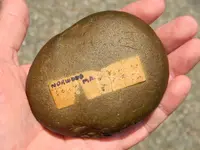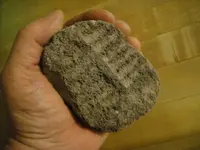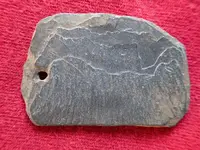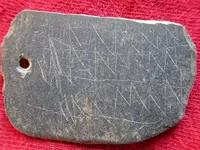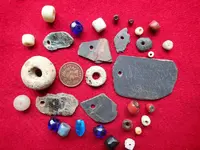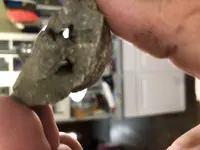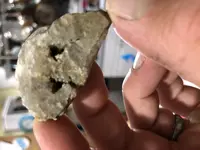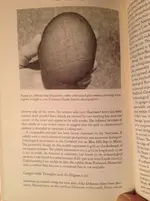Charl
Silver Member
- Joined
- Jan 19, 2012
- Messages
- 3,076
- Reaction score
- 4,772
- Golden Thread
- 0
- Location
- Rhode Island
- Primary Interest:
- Relic Hunting
The only thing I know by way of origin for this incised large pebble/small cobble is that it was found in Norwood, Ma. I don't know the context, the site, anything beyond the town, who I obtained it from, and when I obtained it. Early 90's. So, what follows can only be speculation, all on my part.
I became reinvested in what this represented recently, when it occurred to me that many incised pebbles display this crosshatch pattern, series of lines intersecting other series of lines. Sometimes in roughly right angles, a prehistoric tic-tac-toe board, suggested in jest, I assume, lol.
And I see that such incised pebbles are found at early sites. For instance, the Clovis and pre-Clovis site known as Gault, in Texas. That site has been in the news lately, what with earlier dates still, and it's been talked about here on TNet. Here are two pages from the Lithic Casting Lab, giving a good visual of some of these inscribed stones from Paleo times:
Gault Site Engraved Stones Page 1
And, I've been reading lately about Early and Middle Archaic engraved pebbles found in the Virginia and North Carolina Piedmont. 46 engraved pebbles surface found at the Hardaway site in NC, and 5 more recovered in context. At another site in NC, the engraved stones included "simple crisscrossed lines". In that case, the designs appeared on slate.
https://books.google.com/books?id=W...uals in Archaic Eastern north america&f=false
So, for those reasons, I wondered more about this Mass. quartzite cobble, and am willing to wonder if it might be a fairly early portable petroglyph. I've always appreciated artifacts like this, because they express activity other then utilitarian, other then tools, and instead reflect some function related to ideas. If it somehow reflects the inner life of the ancient one, I am just attracted to that. Not that a tool doesn't represent and reflect inner thought, but in petroglyphs I just believe I'm closer to their cosmology somehow. Hard to describe, but, speculation aside, this is a cool portable petroglyph with a design common in rock art, and the world over. And it really could be any age, just a very simple pattern afterall.
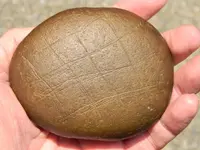

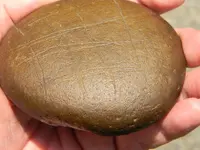
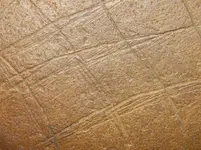
I became reinvested in what this represented recently, when it occurred to me that many incised pebbles display this crosshatch pattern, series of lines intersecting other series of lines. Sometimes in roughly right angles, a prehistoric tic-tac-toe board, suggested in jest, I assume, lol.
And I see that such incised pebbles are found at early sites. For instance, the Clovis and pre-Clovis site known as Gault, in Texas. That site has been in the news lately, what with earlier dates still, and it's been talked about here on TNet. Here are two pages from the Lithic Casting Lab, giving a good visual of some of these inscribed stones from Paleo times:
Gault Site Engraved Stones Page 1
And, I've been reading lately about Early and Middle Archaic engraved pebbles found in the Virginia and North Carolina Piedmont. 46 engraved pebbles surface found at the Hardaway site in NC, and 5 more recovered in context. At another site in NC, the engraved stones included "simple crisscrossed lines". In that case, the designs appeared on slate.
https://books.google.com/books?id=W...uals in Archaic Eastern north america&f=false
So, for those reasons, I wondered more about this Mass. quartzite cobble, and am willing to wonder if it might be a fairly early portable petroglyph. I've always appreciated artifacts like this, because they express activity other then utilitarian, other then tools, and instead reflect some function related to ideas. If it somehow reflects the inner life of the ancient one, I am just attracted to that. Not that a tool doesn't represent and reflect inner thought, but in petroglyphs I just believe I'm closer to their cosmology somehow. Hard to describe, but, speculation aside, this is a cool portable petroglyph with a design common in rock art, and the world over. And it really could be any age, just a very simple pattern afterall.




Last edited:
Upvote
0



